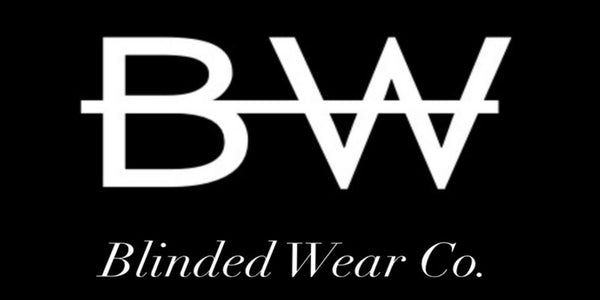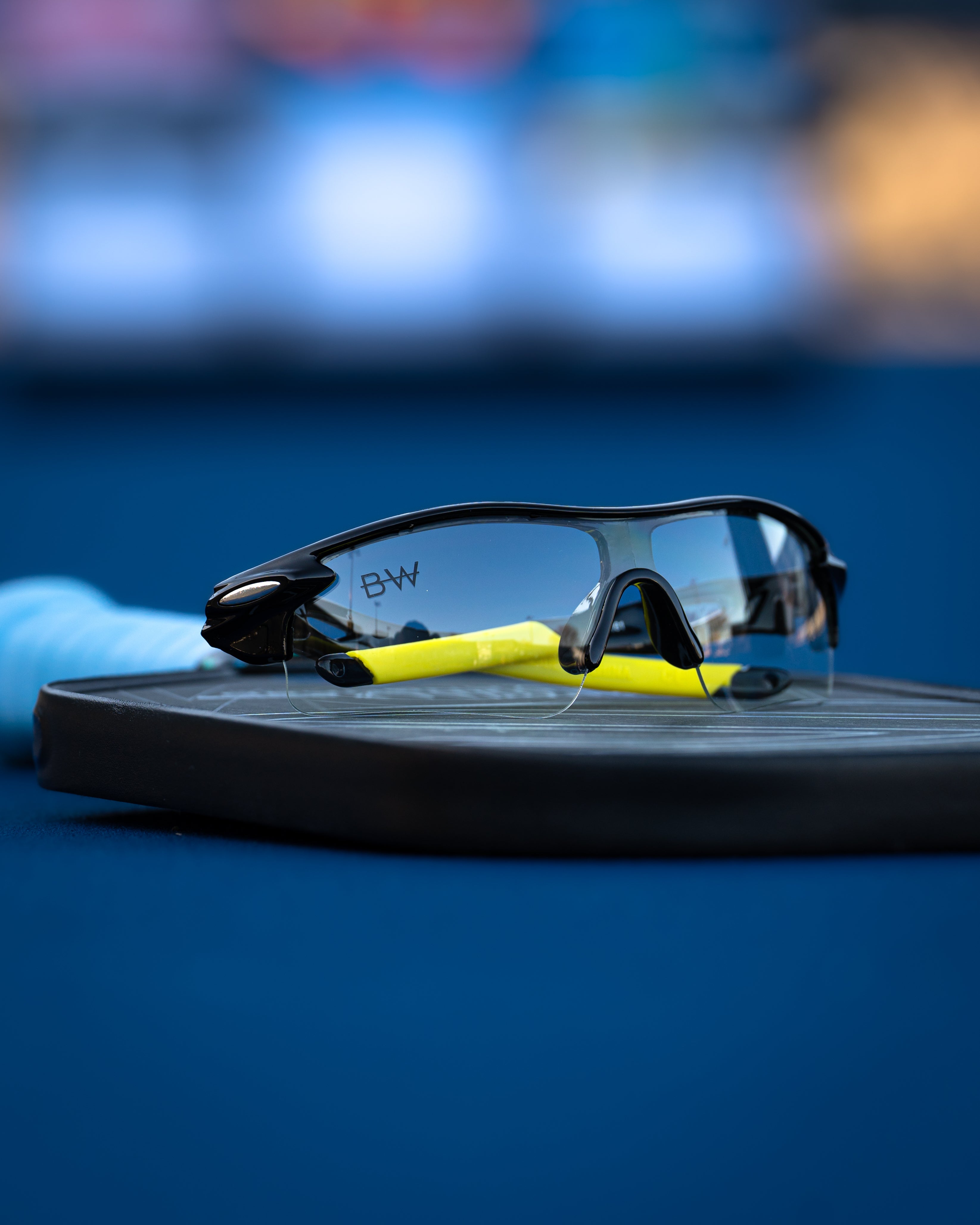Should You Wear Transitional Lenses at Dawn or Dusk?
Share
Should You Wear Transitional Lenses at Dawn or Dusk?
For athletes who train or compete early in the morning or late into the evening, light conditions can change dramatically — sometimes within a single game. That’s where transitional lenses come into play. But are they the right choice for dawn or dusk play? And do they adapt fast enough to keep up with fast-paced sports like pickleball, tennis, or basketball?
In this guide, we break down the science, pros, and real-world performance of transitional lenses at sunrise and sunset — and whether they’re the right RX lens for your schedule, setting, and sport.
What Are Transitional Lenses?
Transitional lenses (also called photochromic lenses) automatically darken in response to UV light. Indoors, they’re clear. Outdoors, they adjust to ambient sunlight, offering all-day flexibility for athletes on the go.
At Blinded Wear, we offer transitional lenses in all prescription RX frames at no extra cost — using shatter-resistant, high-index 1.61 lens material for both clarity and impact protection.
How Transitional Lenses React at Dawn and Dusk
Here’s the catch: transitional lenses require **UV exposure to activate**. And UV levels are lowest at two times of day:
- Early morning (sun just rising)
- Late evening (sun setting below the horizon)
That means during dawn and dusk, transitional lenses will usually remain in a mostly clear or only slightly tinted state. They’re not fully dark — and for many athletes, that’s a benefit.
For those who regularly train during golden hour or play twilight tournaments, transitional lenses offer versatility without over-darkening your vision.
Should You Wear Them at Dawn?
In most cases, yes. At dawn, the light is soft, and sun glare can creep in unexpectedly as the sun rises. A slight tint — especially one that gradually increases as UV builds — can make your warmups and early games more comfortable without requiring a full lens swap.
For this use, we recommend the Zebra II RX and Havana Melt RX, which both offer transitional clarity in performance-locked frames.
Should You Wear Them at Dusk?
During dusk, transitional lenses begin returning to their clear state. The fading light may cause full sun lenses to feel too dark — while fully clear lenses might strain your eyes under the glow of stadium lighting.
Transitional lenses are ideal here because they naturally lighten as UV exposure drops, giving you clear but slightly softened vision.
If you play in facilities with poor overhead lighting or with courts facing the setting sun, this transition can provide just the right level of comfort and contrast enhancement.
For dusk use, explore the Blue Shield RX or the Leathered RX.
Who Should Avoid Transition Lenses at These Hours?
There are a few edge cases where transitional lenses may not be ideal during dawn or dusk:
- If you require constant dark tint for glare or eye sensitivity
- If you're playing under full LED lighting where transitional lenses won’t activate
- If you need full contrast tinting for ball tracking (like grey or amber)
In these cases, a dedicated pair with static grey lenses like the Red Shine RX may be better. We also recommend bringing a spare RX pair in your bag just in case conditions change.
How Fast Do They Change?
Our transitional lenses react to UV in about 30–60 seconds in direct sunlight, and fade back to clear in about 2–5 minutes depending on lens temperature and ambient light.
Keep in mind that they won’t activate fully inside cars, under roofs, or behind full face shields. But for early morning drills and late-day matches, the transitions are often perfectly timed to your visibility needs.
Read more about this balance in: Transition Lenses in Tournament Play: Hidden Advantages.
Can You Trust Transitional Lenses for Tournaments?
Absolutely — and many pro-level players do. While full grey lenses may offer more glare protection under peak sun, transitional lenses offer flexibility you’ll appreciate during:
- Multiple match days with changing weather
- Matches scheduled across daylight and nightfall
- Unpredictable court layouts (indoor/outdoor combos)
Even better — all of our transitional lenses are built from 1.61 high-index material, making them lightweight, crystal clear, and backed by our unlimited warranty.
Pairs That Shine at Dawn and Dusk
- Zebra II RX – Great for sunrise warmups and full-court movement
- Havana Melt RX – Featherlight, soft frame perfect for transitional tint
- Blue Shield RX – Versatile, protective design for mixed light conditions
- Leathered RX – Sleek profile with transition-ready optics
FAQ: Transitional Lenses for Morning and Evening Play
Do transitional lenses work in cloudy weather?
Yes. Even on overcast mornings, UV is present — just reduced. Lenses will still activate, but often with a lighter tint.
Will they be too dark at sunset?
No — they begin to fade as UV drops. At dusk, most players find the lens returns to nearly clear within minutes.
Are these lenses polarized?
No. Blinded Wear uses non-polarized lenses to preserve depth perception and avoid court glare distortion.
Conclusion: The Most Versatile RX Lens for Unpredictable Light
If you regularly play or warm up at sunrise or sunset, transitional lenses offer one of the best combinations of comfort, clarity, and flexibility. They don’t darken instantly — and that’s often exactly what you want in mixed light conditions.
At Blinded Wear, every transitional lens is built for athletes: shatter-resistant, distortion-free, and included in every RX pair at no extra cost.
Shop our full collection of prescription pickleball glasses today and step into any court condition with clarity and confidence.

